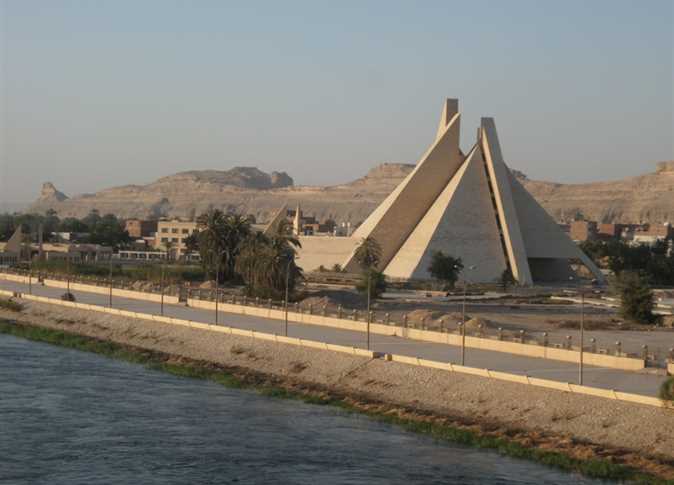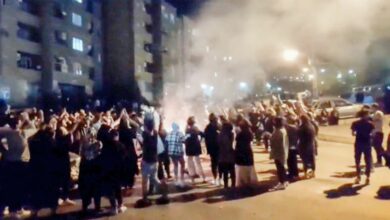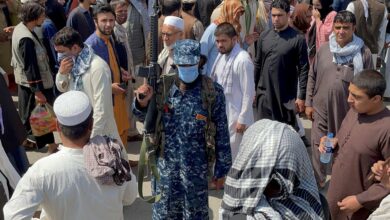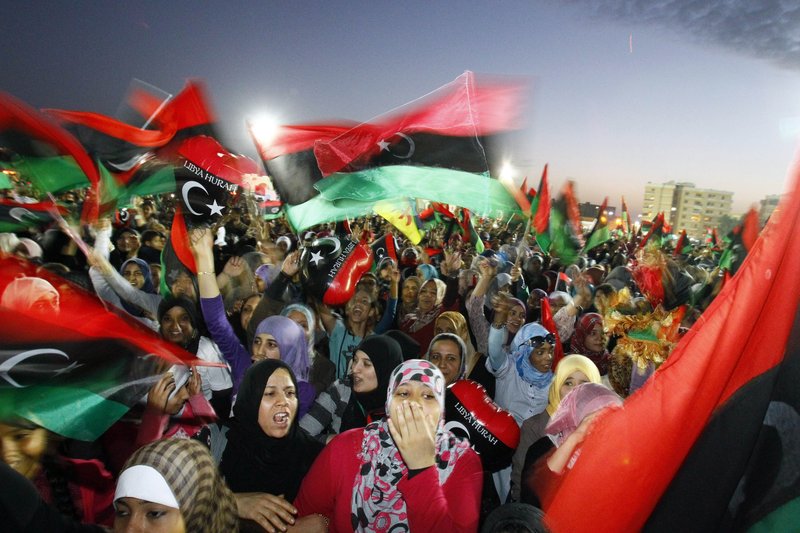At the beginning, it was a pair of young street artists that constituted “Team El Teneen” (Dragon Team). Now the anonymous stencil artist is pretty much by himself.
El Teneen’s works add color to the grim walls of the Cairo metropolis, yet they also have a strong political undertone. A newcomer to the street art scene, his stencils, such as the chessboard image on the wall of the American University in Cairo’s (AUC) Tahrir campus, have become icons of the 25 January revolution.
Prior to the revolution, he directed his creative talent to abstract painting, although his studies were closer to the field of science (he doesn’t want to reveal too much about his life). From the beginning of the revolution, however, he’s taken part in street art, a new trend, getting himself entangled in Egyptian politics by accident.
The way he carefully guards his identity reminds us of the UK street artist Banksy. Still, he agreed to talk to Al-Masry Al-Youm over the phone about his ongoing projects and how he got started.
Al-Masry Al-Youm: How did you get started and why?
El Teneen: It all started on 26 January, when I was at a protest. I thought that even if the revolution didn’t succeed, there should be traces of it left for people to see. I never did any street art before, and stencil was a good compromise because it was quick and easy. I started with a picture of Mubarak, which was great fun.
It became a new way to express myself. Before, the internet was the only place where we could honestly converse. On the street, we simply couldn’t talk freely, especially not about Mubarak. Through street art, freedom of expression moved from virtual space to the real world.
Al-Masry: What is the aim of your work?
El Teneen: Even though I don’t like politics or to be anywhere near it, I feel like I have to talk about it. When we got started, our message was very political. And even now, I think my graffiti is more political than others’. In general, I don’t have a theme; I just put something on a wall to make people think.
Al-Masry: Do you get any feedback from people?
El Teneen: Not really, certainly because I’m anonymous. I talk to people while spraying, but people don’t care who I am; they are curious because it’s usually the first time they see graffiti being done. They often ask about the meaning of the image. Although I give them an answer, they usually have their own interpretations.
Al-Masry: How long does it take you to make a stencil?
El Teneen: It takes time to find an idea that I’d like to work on. First I pick a topic, then play with it in my head: then I draw it on paper and play with it again. While I’m cutting out the stencil, I think about where I’m going to do it. It goes where I want it to go. The chessboard image on the wall of the AUC Tahrir campus, for instance, was done very quickly. It was one small stencil that we reused a few times to get the final result. I usually have a couple of friends who help me out with the spraying.
Al-Masry: And how much does it cost?
El Teneen: It’s fairly cheap; what’s necessary is a spray can that costs around LE10 and a big piece of paper for the stencil, which is the same price. I can get them from stationary shops across the city, and it’s great because it’s not a very expensive hobby.
Al-Masry: The chessboard image is pretty famous, what does it mean to you?
El Teneen: It has several interpretations, and I don’t particularly think that mine is the only right one. To me it means that something has changed. The point is that all the pawns are on one side, and the king is upside down; the people protected the revolution are with the pawns and many high-ranking officials are still on the side of the ousted king. Some might disagree and interpret it in a different way. That’s the cool thing about art.
Al-Masry: How is the street art scene treating you?
El Teneen: I do know a couple of street artists, but it’s hard because I’m anonymous. I really like some of the graffiti in Cairo. I actually made a piece with the contribution of Sad Panda (another stencil street artist); we both added something to each other’s work, which was quite fun. As for the international scene, to be honest I don’t know much about it. I'm familiar with Banksy’s work and at the beginning he was my main source of inspiration; that’s why my works were simple and monochromatic.
Al-Masry: What are your plans for the future?
El Teneen: Even though I’m not a fan of politics, I am getting more and more into it. But, I would also like to turn my work into something more social and provocative. Sex and religion are hot topics, and they should reach the streets. Egyptians have narrow views about these issues and I want to upset them and make them think.




